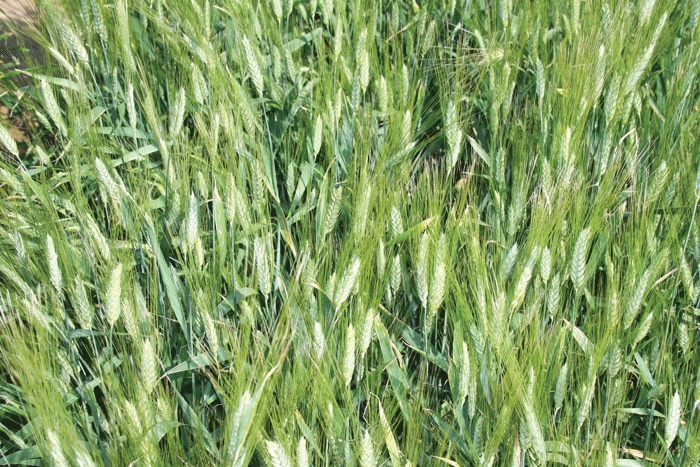September 12, 2011

Wheat growers in North Carolina are getting interested in a very early planting system, and there is no mystery as to why.
“It could allow you to plant wheat before soybean harvest,” said Randy Weisz, North Carolina Extension small grains specialist. “It could be ideal for growers who plant wheat following corn and would like to finish planting before starting soybean harvest.”
In North Carolina, the ideal dates for planting wheat roughly coincide with the beginning of soybean and cotton harvest.
“Consequently, wheat planting is often delayed until cold wet weather has set in,” he said. “Wheat development suffers.”
Here’s why: Up to 85 percent of the yield in any given wheat field is made up of grain heads formed on tillers that developed in warm fall weather.
“When planting is delayed, there is less time for fall tillers to develop and this results in reduced yield potential,” he said.
This is especially true for no-till.
“Wheat planted no-till tends to grow and tiller more slowly than when planted in conventionally tilled seedbeds, especially in Coastal Plain and Tidewater soils,” said Weisz. “Planting early is one way to help no-till seedlings make up for this slower growth and produce more fall tillers.”
If wheat is planted before the start of soybean or cotton harvest, it can take full advantage of the warm tiller-inducing fall weather.
Best time to plant
The best time to plant wheat is within seven to 10 days of the first freeze. Planting earlier than that puts the crop at risk of early season insect damage, including wireworm, Hessian fly and aphid feeding.
One way to avoid these problems is to use an insecticidal seed treatment, such as Gaucho XT or Cruiser/Dividend. These seed treatments can give about 19 days of protection from these insects.
A second potential problem is too much fall tiller production. That can result in very thick stands that may lodge before the end of winter. You can avoid this to some extent by reducing seeding rates.
Finally, there is a fear that you can’t plant too early because of the risk of spring freeze damage: The earlier wheat is planted, the earlier it heads out in the spring and becomes “freeze tender.”
In North Carolina, most “early heading” wheat varieties head in the first week of April. “Late-heading” varieties may head out one to two weeks later. Consequently, if there is a freeze at the end of the first week in April, early-heading varieties may be damaged while the late varieties may escape.
There are five essential steps to the very early wheat-planting system, said Weisz.
1.) Plant 10 days to two weeks early, but no earlier than that. Because the seed treatments used in this system give only limited protection. Planting should not be more than about 14 days early. For example growers in the central North Carolina Piedmont around Salisbury can plant about Oct. 1. Growers in the Coastal Plains near Kinston can plant around Oct. 8, and Tidewater growers from Plymouth to Terra Ceia can target planting for around Oct. 10.
2.) Plant only late-heading varieties. They have the lowest risk of damage from a spring freeze.
3.) Always use seed treated with an insecticide. “In our very early planting trials in the North Carolina Piedmont, an insecticidal seed treatment usually resulted in a 10-bushel-per-acre yield advantage over untreated seed,” said Weisz.
4.) Reduce your seeding rates below normal. Early planting results in extra tiller development, says Weisz. To avoid excessive growth, wheat should be planted with one third less seed then normal.
5.) Think carefully about tillage. “In the North Carolina Piedmont, the very early planting system has worked well with no-till planting,” said Weicz. “But it has not worked very well with no-till planting in the sandy Coastal Plains or organic Tidewater soils. In these soils, early planting works best when planting is combined with conventional-tillage.”
When these five steps are followed, yields are similar to those achieved at normal recommended times and with untreated seed, Weisz said.
North Carolina wheat growers might also be interested in information on how to select the right wheat variety for early planting. Visit http://southeastfarmpress.com/grains/dial-right-wheat-variety-2012 for that information
You May Also Like




